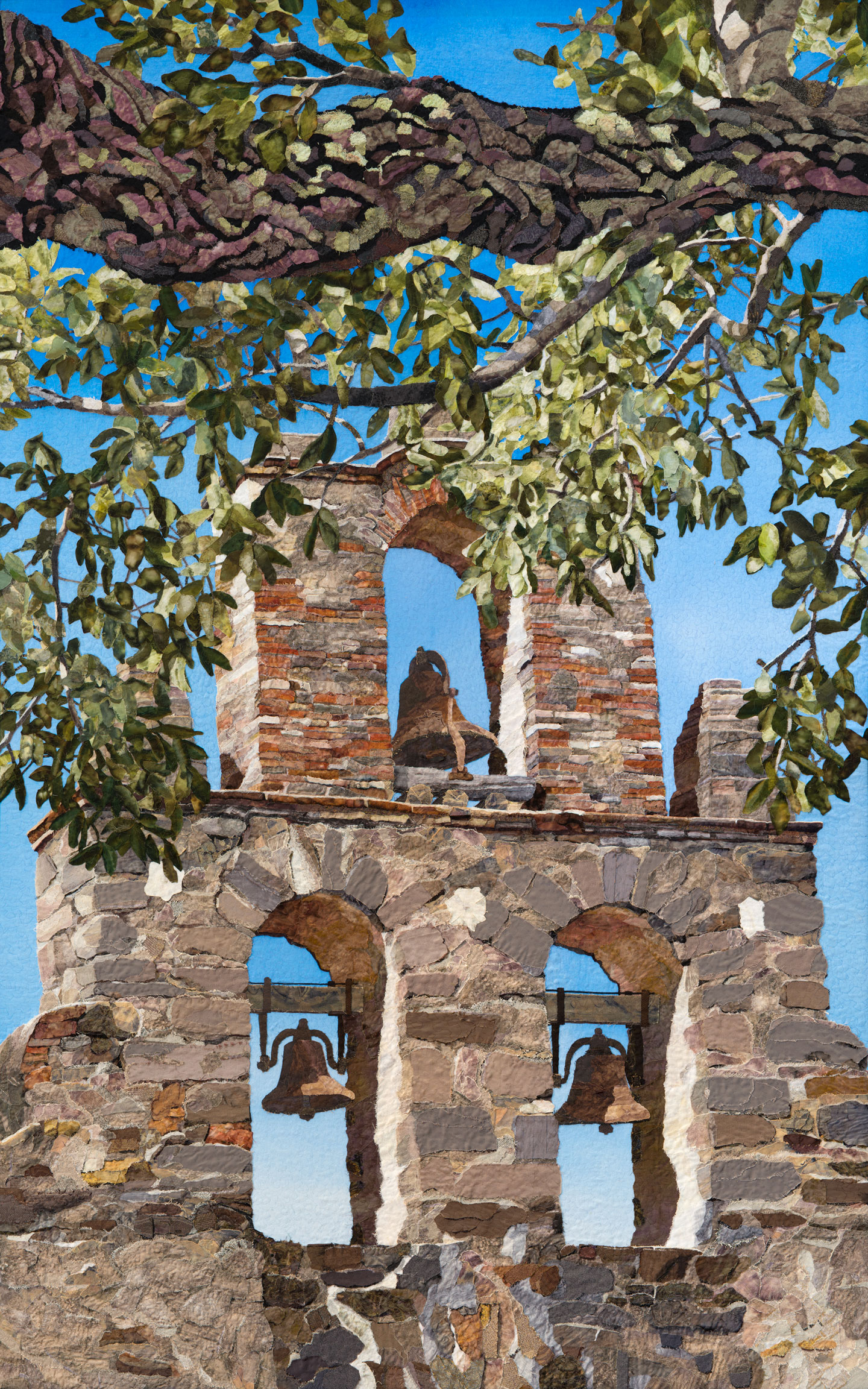A former architect, Merle Axelrad now works her magic with fabric.
Photorealism achieved in paint can stun the mind. Such perfection achieved with scraps of fabric absolutely boggles it. Which might be why textile artist Merle Axelrad doesn’t use “the Q-word.” She’s proud of her quilting roots but discovered early on that the word quilt doesn’t open a lot of gallery doors.
As a licensed architect, Axelrad was accustomed to painstaking detail. But even working with creative clients like Disney and George Lucas’ Skywalker Ranch, she could not have imagined where her own artistic bent would take her when, after 12 years of practicing architecture in San Francisco, she took some time off to be a stay-at-home mom and began exploring fabric as fine art.
That was 22 years ago. Today, Axelrad works out of a studio on the second floor of Arthouse in Sacramento, California. Filled with light, the space is also filled with fabric. There are stacks sorted by color, a pallet of used clothing, hand-painted silk gauze, discontinued upholstery samples — rescued orphans all. “I’m the last stop before the garbage can,” she says.
The magic begins with a photograph or sketch of a place or thing Axelrad wants to portray. Then she goes hunting through her fabric. But it’s not a simple matter of matching color and texture on a flat plane — there are also layers to consider. Realizing that fabric is not flat or opaque, Axelrad discovered that five layers of silk gauze could suggest the light and depth of water, the rocks beneath the surface — even the reflection of the sky. Fabric roughened along the edges could capture something real but remain abstract, evoking gleaming rocks down to their individual minerals, eucalyptus trees down to every shred of peeling bark, or rice lands down to green shoots pushing up through flooded fields.
The time-consuming work required to achieve her magical effect is exacting. A square foot of a composition may consist of 30 to 300 pieces of fabric, some as small as a quarter inch. Large works contain up to 7,000 such textile brush strokes, all pieced together not with glue but with her 17-year-old sewing machine. Axelrad’s earliest collages typically involved 200 to 300 hours of patient labor. But as her work has become more and more detailed, it also takes a lot more time. Two recent pieces depicting Texas missions took 1,400 hours to complete.

Reproduced in print or online, Axelrad’s art looks photographic. But in person, close up enough to see the textures of the fabric, the achievement is breathtaking. That effect wasn’t lost on the judges of a competition 14 years ago for a public art commission for the California EPA’s new headquarters. Axelrad submitted a proposal to create eight fabric collages representing geographic features unique to California, and won. “I had never done a landscape, and suddenly I had a year to complete eight,” she recalls. “It was a crazy year, but it was just the beginning of many future commissions.”
Now, her stunning landscapes hang everywhere from the Sacramento International Airport and Sacramento City Hall to The Ritz-Carlton, Lake Tahoe. This year she will be creating her first truly free-standing three-dimensional piece as a public art commission for the county of Los Angeles. You can see Axelrad’s work in progress during Sacramento’s Second Saturday Art Walk tours or by just dropping in to her studio. As she says, “Anytime the building is open, my door is open.”
From the October 2013 issue.














